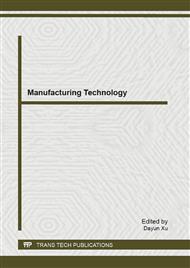p.389
p.396
p.402
p.409
p.414
p.420
p.425
p.431
p.439
Evaluation of the Effects of Sterilization by Irradiation on Teratogenic Toxicity of Central Vein Catheter
Abstract:
Purpose: The objective of this study was to evaluate the teraogenic toxicity of central vein catheters after irradiation sterilization and provide basis for further application of medical apparatus in future. Methods: central vein catheters were sterilized by irradiation as ISO11137 standard, afterwards, a series of tests including chromosome aberration test, micronucleus test and Ames test were performed to evaluate their teratogenic toxicity. Results: After irradiation sterilization, the samples showed no genetic toxicity (did not cause chromosomal aberrations) and no mutagenic effect, and did not increase the incidence of bone marrow cells micronucleus, demonstrating that the product material was quite stable after irradiation. Conclusions: No teratogenicity was induced in central vein catheters by the setting dose of irradiation sterilization. And therefore irradiation sterilization is a commendable method for such kind of materials, which deserves further promotion and application.
Info:
Periodical:
Pages:
414-419
Citation:
Online since:
December 2012
Authors:
Price:
Сopyright:
© 2013 Trans Tech Publications Ltd. All Rights Reserved
Share:
Citation:


